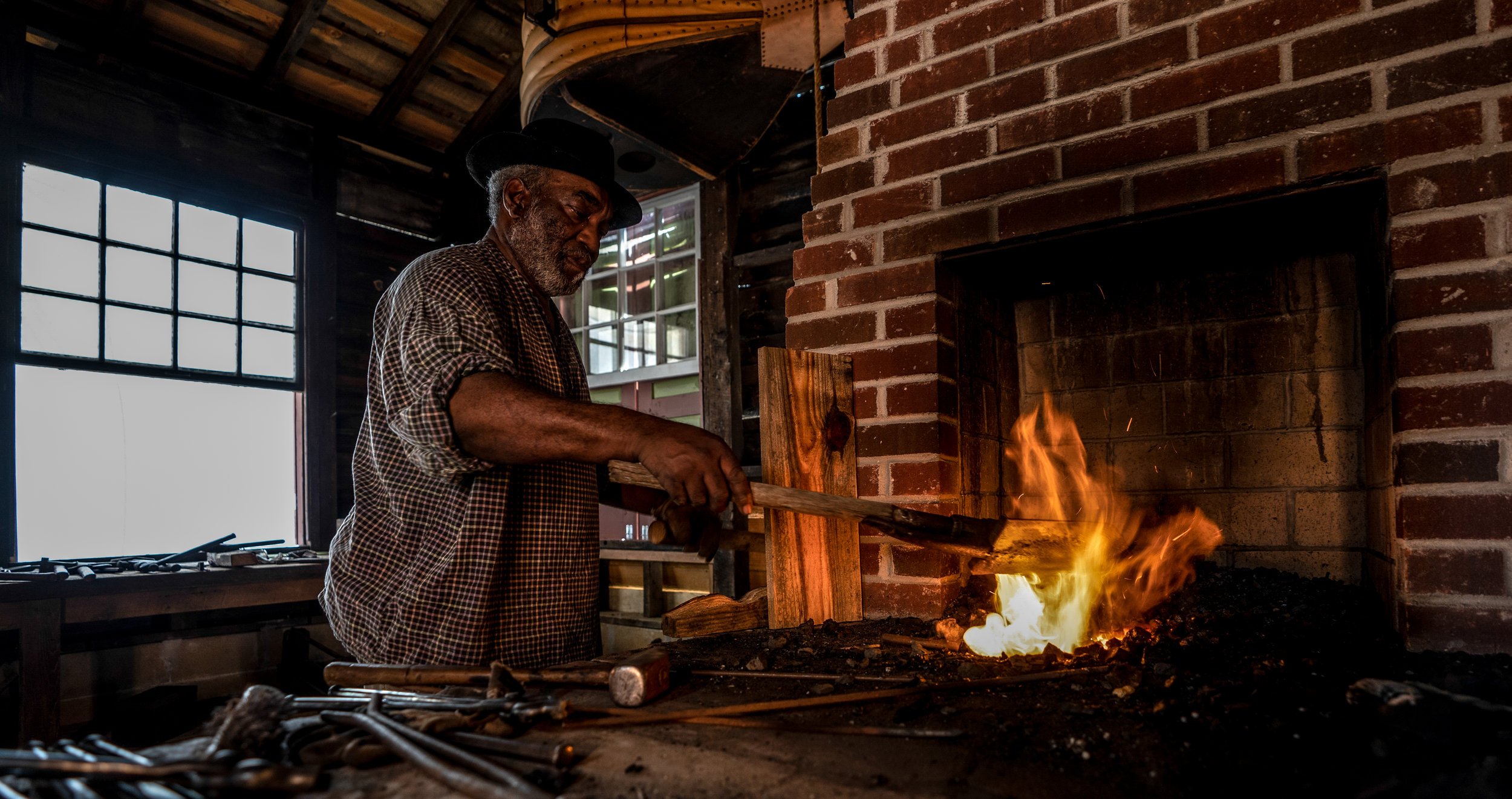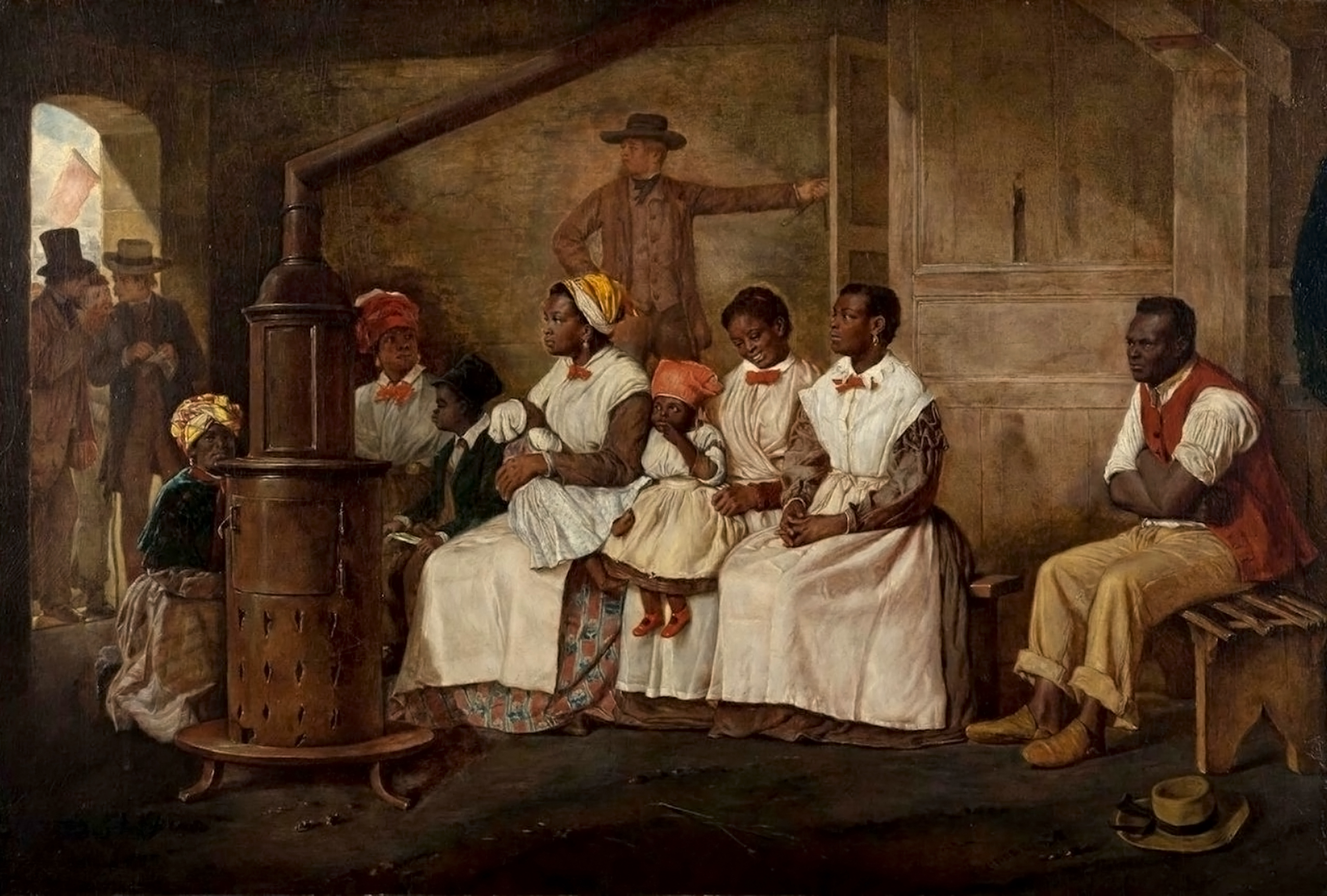|
African Burial Ground, Richmond, Virginia
The Shockoe Bottom African Burial Ground, or (African Burial Ground in Shockoe Bottom) known historically as the "Burial Ground for Negroes", is the older of two municipal burial grounds established for the interment of free people of color and the enslaved in the city of Richmond, Virginia. It is located at 1554 E Broad St., across from the site of Lumpkin's Jail. The area now known as Shockoe Bottom, was historically called Shockoe Valley. History The Shockoe Bottom African Burial Ground was thought to have been established as early as 1750, however a land deed for the property supports a 1799 founding. It was closed to new burials in 1816 upon the opening of the Shockoe Hill African Burying Ground (Richmond's 2nd African Burial Ground) located at 1305 N 5th St. The Burial Ground for Negroes, the name by which the Shockoe Bottom African Burial Ground appeared on the 1809 Plan of the City of Richmond by Richard Young was also the site of the city gallows. It was thought to be ... [...More Info...] [...Related Items...] OR: [Wikipedia] [Google] [Baidu] |
Shockoe Bottom
Shockoe Bottom (also known historically as Shockoe Valley) is an area in Richmond, Virginia, just east of downtown, along the James River. Located between Shockoe Hill and Church Hill, Shockoe Bottom contains much of the land included in Colonel William Mayo's 1737 plan of Richmond, making it one of the city's oldest neighborhoods. History Shockoe was named in the 1730 Tobacco Inspection Act as the site of a tobacco inspection warehouse on land owned by William Byrd II. The area's development in the late 18th century was aided by move of the state capital to Richmond and the construction of Mayo's bridge in 1788 across the James River (ultimately succeeded by the modern 14th Street Bridge), as well as the siting of key tobacco industry structures, such as the public warehouse, tobacco scales, and the Federal Customs House in or near the district. Throughout the 19th Century, Shockoe Bottom was the center of Richmond's commerce with ships pulling into port from the James River ... [...More Info...] [...Related Items...] OR: [Wikipedia] [Google] [Baidu] |
Gabriel Prosser
Gabriel ( – October 10, 1800), referred to by some as Gabriel Prosser, the surname of his slaveholder, was a man of African descent born in Virginia, and a blacksmith enslaved by the Prosser family who planned a large slave rebellion in the Richmond, Virginia, area in the summer of 1800. Information regarding the revolt, which came to be known as "Gabriel's Rebellion", was leaked prior to its execution, and he and twenty-five followers were hanged. The site of Gabriel's execution was for several years believed to have been at the Shockoe Bottom African Burial Ground, historically known as the Burial Ground for Negroes. His execution was advertised as occurring at the usual place, however in 1800 that may have been a location other than the Burial Ground for Negroes. The location of Gabriel's burial is also unknown. Gabriel's planned uprising was notable not because of its results—the rebellion was quelled before it could begin—but because of its potential for mass chaos a ... [...More Info...] [...Related Items...] OR: [Wikipedia] [Google] [Baidu] |
Shockoe Hill African Burying Ground
The Shockoe Hill African Burying Ground (''Richmond's 2nd African Burial Ground'') was established by the city of Richmond, Virginia, for the interment of free people of color, and the enslaved. The heart of this now invisible burying ground is located at 1305 N 5th St. It was created as the replacement for the Burial Ground for Negroes, now also called the Shockoe Bottom African Burial Ground, (or African Burial Ground in Shockoe Bottom). Shockoe Bottom was known historically as Shockoe Valley. The Burial Ground for Negroes was closed in 1816 upon the opening of this new African Burying Ground on Shockoe Hill. The Shockoe Hill African Burying Ground is one of Virginia's most endangered historic places. Major threats to the burial ground are the DC2RVA high-speed rail project, the east-west Commonwealth Corridor, as well as the proposed widening of I-64, and various infrastructure projects. History Establishment The Shockoe Hill African Burying Ground was established in 18 ... [...More Info...] [...Related Items...] OR: [Wikipedia] [Google] [Baidu] |
Gallows
A gallows (or scaffold) is a frame or elevated beam, typically wooden, from which objects can be suspended (i.e., hung) or "weighed". Gallows were thus widely used to suspend public weighing scales for large and heavy objects such as sacks of grain or minerals, usually positioned in markets or toll gates. The term was also used for a projecting framework from which a ship's anchor might be raised so that it is no longer sitting on the bottom, i.e., "weighing heanchor,” while avoiding striking the ship’s hull. In modern usage it has come to mean almost exclusively a scaffold or gibbet used for execution by hanging. Etymology The term "gallows" was derived from a Proto-Germanic word '' galgô'' that refers to a "pole", "rod" or "tree branch". With the beginning of Christianization, Ulfilas used the term ''galga'' in his Gothic Testament to refer to the cross of Christ, until the use of the Latin term (crux = cross) prevailed. Forms of hanging Gallows can take several f ... [...More Info...] [...Related Items...] OR: [Wikipedia] [Google] [Baidu] |
Cemeteries In Richmond, Virginia
A cemetery, burial ground, gravesite or graveyard is a place where the remains of dead people are buried or otherwise interred. The word ''cemetery'' (from Greek , "sleeping place") implies that the land is specifically designated as a burial ground and originally applied to the Roman catacombs. The term ''graveyard'' is often used interchangeably with cemetery, but a graveyard primarily refers to a burial ground within a churchyard. The intact or cremated remains of people may be interred in a grave, commonly referred to as burial, or in a tomb, an "above-ground grave" (resembling a sarcophagus), a mausoleum, columbarium, niche, or other edifice. In Western cultures, funeral ceremonies are often observed in cemeteries. These ceremonies or rites of passage differ according to cultural practices and religious beliefs. Modern cemeteries often include crematoria, and some grounds previously used for both, continue as crematoria as a principal use long after the interment areas ... [...More Info...] [...Related Items...] OR: [Wikipedia] [Google] [Baidu] |
African-American Cemeteries In Virginia
African Americans (also referred to as Black Americans and Afro-Americans) are an ethnic group consisting of Americans with partial or total ancestry from sub-Saharan Africa. The term "African American" generally denotes descendants of enslaved Africans who are from the United States. While some Black immigrants or their children may also come to identify as African-American, the majority of first generation immigrants do not, preferring to identify with their nation of origin. African Americans constitute the second largest racial group in the U.S. after White Americans, as well as the third largest ethnic group after Hispanic and Latino Americans. Most African Americans are descendants of enslaved people within the boundaries of the present United States. On average, African Americans are of West/Central African with some European descent; some also have Native American and other ancestry. According to U.S. Census Bureau data, African immigrants generally do not self-iden ... [...More Info...] [...Related Items...] OR: [Wikipedia] [Google] [Baidu] |
African-American History In Richmond, Virginia
African Americans (also referred to as Black Americans and Afro-Americans) are an ethnic group consisting of Americans with partial or total ancestry from sub-Saharan Africa. The term "African American" generally denotes descendants of enslaved Africans who are from the United States. While some Black immigrants or their children may also come to identify as African-American, the majority of first generation immigrants do not, preferring to identify with their nation of origin. African Americans constitute the second largest racial group in the U.S. after White Americans, as well as the third largest ethnic group after Hispanic and Latino Americans. Most African Americans are descendants of enslaved people within the boundaries of the present United States. On average, African Americans are of West/Central African with some European descent; some also have Native American and other ancestry. According to U.S. Census Bureau data, African immigrants generally do not self-iden ... [...More Info...] [...Related Items...] OR: [Wikipedia] [Google] [Baidu] |
History Of Slavery In Virginia
Slavery in Virginia began with the capture and enslavement of Native Americans during the early days of the English Colony of Virginia and through the late eighteenth century. They primarily worked in tobacco fields. Africans were first brought to colonial Virginia in 1619, when 20 Africans from present-day Angola arrived in Virginia aboard the ship ''The White Lion''. As the slave trade grew, enslaved people generally were forced to labor at large plantations, where their free labor made plantation owners rich. Colonial Virginia became an amalgamation of Algonquin-speaking Native Americans, English, other Europeans, and West Africans, each bringing their own language, customs, and rituals. By the eighteenth century, plantation owners were the aristocracy of Virginia. There were also a class of white people who oversaw the work of enslaved people, and a poorer class of whites that competed for work with freed blacks. Tobacco was the key export of the colony in the seventeenth ... [...More Info...] [...Related Items...] OR: [Wikipedia] [Google] [Baidu] |






